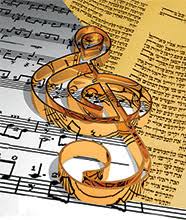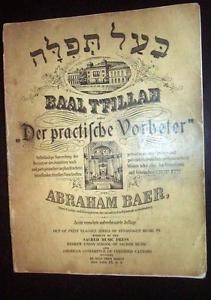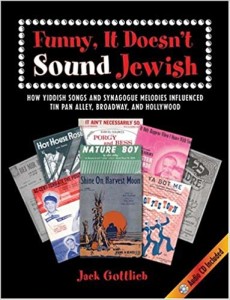 The Psalmist said, “Oh come, let us sing to the Lord; let us make a joyful noise to the rock of our salvation!” and “Sing to him, sing praises to him; tell of all his wondrous works!”
The Psalmist said, “Oh come, let us sing to the Lord; let us make a joyful noise to the rock of our salvation!” and “Sing to him, sing praises to him; tell of all his wondrous works!”
The Talmud tells us “Three things soften a man’s heart: a pleasant melody, a pleasant scene, and a fragrant odor.” and “Song is obligatory in the ritual of the sanctuary.”
Hasidic master Nachman of Bratslav stated that “Nature is saturated with melody; heaven and earth are full of song.”
Shneor Zalman, the founder of Chabad, observed that “In the high spheres there are temples which may be opened only with song song.”
 Leonard Bernstein, America’s musical genius, wrote that “Music can name the unnameable and communicate the unknowable.”
Leonard Bernstein, America’s musical genius, wrote that “Music can name the unnameable and communicate the unknowable.”
Music traveled with the Israelites; followed the Torah in its processions; rose through the grand synagogues of Europe. Music had a place in the deadly camps of the Holocaust and in the excitement of the new State of Israel.
Music is a strong thread in Jewish religion and practice. Music is mentioned hundreds of times in the Bible. Be it a wordless niggun or a full orchestral piece, music has power to inspire, to sooth, to conquer, to praise.
Joey Weisenberg, this week’s scholar-in-residence and author of The Torah of Music: reflections on a tradition of singing and song, will enlighten us more as to the place of music in Jewish tradition.
This tradition has continued with Jewish musicians composing for both the liturgical and secular worlds. Indeed, some of the most beloved American songs were composed by Jews and often, if one listens very carefully, strains from Jewish liturgy-maybe only a note or two- can be heard coming from a trumpet or saxophone.
The following books are selected from items on music found on the Lampert Library shelves.
Songs from the Garden of Eden: Jewish lullabies and nursery rhymes. storybook and CD. International collection of Jewish children’s songs. (J)
Yes, we sang!: songs of the ghettos and concentration camps
 The Zmirot & Kumzitz Songbook. A collection of Shabbat songs from a master compiler.
The Zmirot & Kumzitz Songbook. A collection of Shabbat songs from a master compiler.
Black, Boker Tov!: good morning! (J)
Edelman, Discovering Jewish Music. Good source for those first learning about Jewish music.
Gottlieb, Funny, it doesn’t sound Jewish: how Yiddish songs and synagogue melodies influenced Tin Pan Alley, Broadway and Hollywood.
Hoffman, The Klezmer Bunch heads off to a wedding with hilarious results.
Idelsohn, Jewish Music: its historical development. Classic history of Jewish music.
Leibovitz, A Broken Hallelujah: rock and roll, redemption, and the life of Leonard Cohen
Levin, Synagogue Song in America
Lisowski , On the Little Hearth: words and music for the popular Yiddish classic, Oif’n Pripitchik
Rogovo, The Essential Klezmer: a music lover’s guide to Jewish roots and soul music, from the Old World to the Jazz Age to the downtown avant-garde.
Rubin, Voices of a People: the story of Yiddish folksong
Seeger, Turn! Turn! Turn!: words from Ecclesiastes circa 250 B.C.E. (J) Beautiful artwork accompanies the words.
Sfar, Klezmer. Tells a wild tale of love, friendship, survival, and the joy of making music in pre-World War II Eastern Europe in graphic novel format.
Stuchner, The Kugel Valley Klezmer Band. When Isaac becomes ill and can’t play in the band, Shira fills in for him.
Walli, One More River: Noah’s Ark in song A carnival of animals parades into Noah’s Ark. (J)
Resources on American Jewish Music are found at www.milkenarchive.org ,an online resource that documents and collects the history of Jewish music in America through themed collections of musical recordings, videos, essays, oral histories and more.
Another resource is L’Institut Europeen des Musique Juives (www.iemj.org) which preserves and disseminates Jewish musical heritage. Available in French or English.
- Is It Passover Yet? - Thu, Apr 18, 2024
- MESH Report April 9, 2024 - Thu, Apr 11, 2024
- Guess Who? - Wed, Mar 13, 2024
